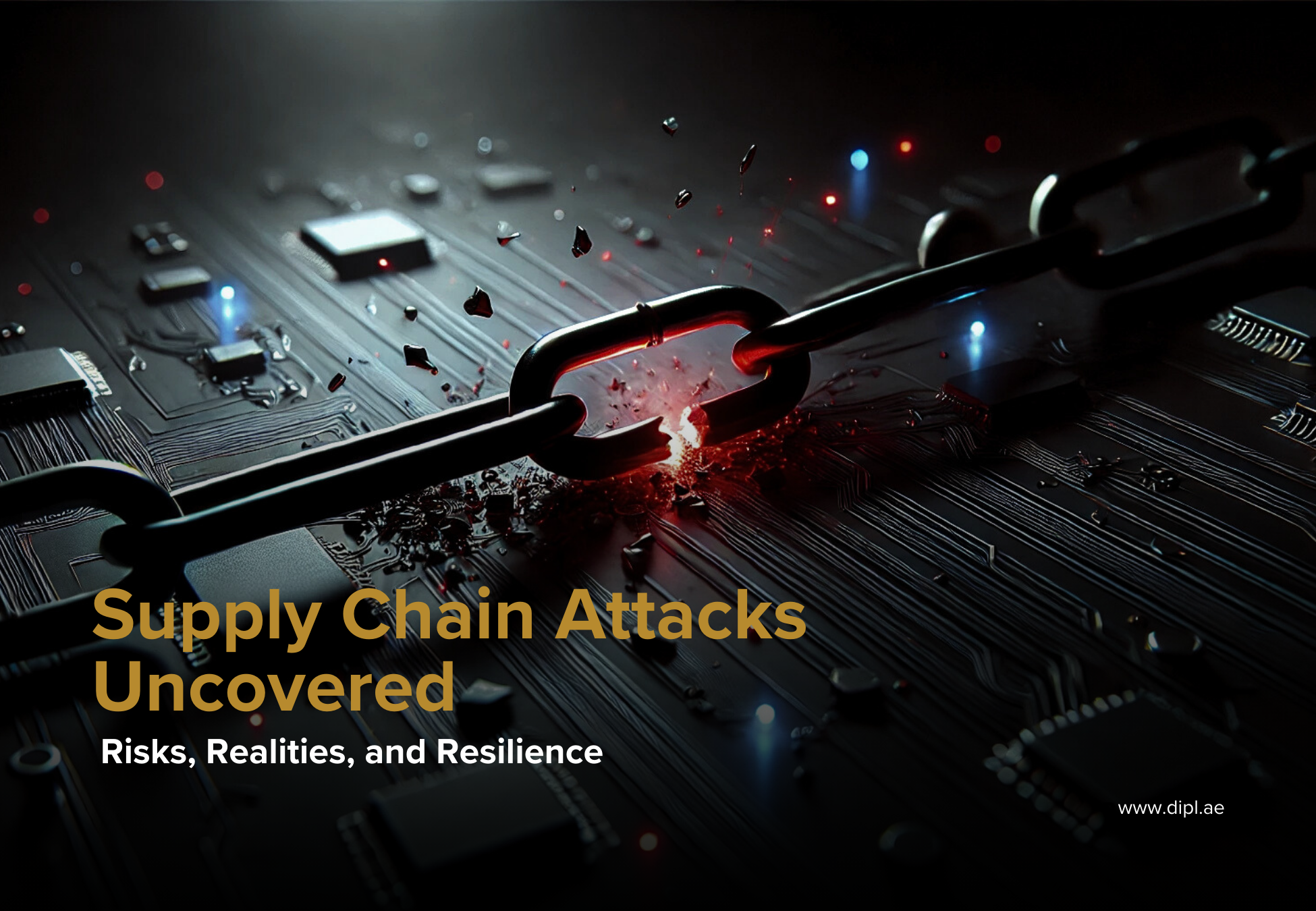A supply chain attack targets the interconnected network of vendors, suppliers, and components that organizations depend on. Instead of breaching a target directly, attackers compromise a weaker link, for example, a software library, update mechanism, or hardware component, and use that trust to infiltrate many downstream systems.
As one analyst explains, “Supply chain attacks target less-secure elements in the supply chain network; it could be a third-party vendor, a software update, or even a hardware component”. In practice, software supply chain attacks are far more common: attackers inject malicious code into software builds, dependencies, or update servers so that all users of that software are infected.
Whether via hardware or software, the essence of a supply chain attack is that compromising one trusted supplier can infect many victims.
Software vs. Hardware Vectors:
Software Supply Chain Attacks
These involve corrupting code or build processes. Attackers might hijack a developer’s code repository, inject malicious payloads into open-source libraries, or compromise an update server.
Classic examples include the 2020 SolarWinds Orion breach (a trojanized update delivered to thousands of customers) and the 2021 Kaseya VSA ransomware incident (malware distributed via the vendor’s update mechanism).
Such attacks rely on code-signing or automated deployment to the victim; the malicious software appears as a trusted update, letting malware slip past defenses.
Hardware/Physical Supply Chain Attacks
Here, attackers tamper with physical components or devices during manufacturing or transit. This could mean altering firmware on network equipment, injecting malicious chips into motherboards, or substituting counterfeit parts.
For example, Bloomberg reported that spies embedded tiny malicious microchips in server motherboards, an attack described as “the most significant supply chain attack” if true.
Major companies involved later denied the incident, but it highlights the risk. In regulated and high-security environments (critical infrastructure, defense, finance), even hardware implants can be vectors for disruption.
Notable Attack Case Studies:
- SolarWinds (Dec 2020): The attackers inserted malicious code into SolarWinds’ Orion network-monitoring software updates. An estimated 18,000 organizations downloaded the infected update, including nine U.S. federal agencies and over 100 large companies.
The breach went undetected for months, leading to widespread infiltration and system compromise. Surveys found 85% of impacted businesses reported effects, with an average loss equivalent to 11% of annual revenue.
- NotPetya (June 2017): Originally aimed at Ukraine, the NotPetya malware spread globally via a backdoored update of a Ukrainian accounting software. Within hours, it “raced beyond Ukraine” and crippled multinational companies such as Merck, Maersk, FedEx-TNT, and Saint-Gobain.
Each of these firms reported nine-figure losses. In total, damage exceeded $10 billion according to U.S. estimates. NotPetya showed that a single compromised update can shut down operations across industries and even cause ripple effects in national economies.
- Kaseya (July 2021): The REvil ransomware group exploited zero-day vulnerabilities in Kaseya’s VSA remote management software to distribute ransomware to the vendor’s customers.
A trickle of about 40 Kaseya-managed MSP servers on premises eventually ballooned to an estimated 2000 organizations worldwide infected. The attack halted operations at hundreds of businesses and demanded a $70 million ransom. It highlighted how a breach in a single software supplier can cascade.
Business and Regulatory Impact
Supply chain attacks can cause massive business disruptions and regulatory headaches, especially in regulated industries. Operationally, affected companies face ransomware payments, recovery costs, lost revenue from downtime, and damaged reputation.
Regulatory and compliance consequences can compound the impact. In healthcare or finance, stolen data can trigger HIPAA or GLBA breach fines.
Prevention and Risk Management Strategies:
To reduce supply chain risks, organizations should combine strong internal defenses with robust vendor controls. Key measures include:
- Vendor Security Assessment: Vet and monitor suppliers continuously using audits, certifications, and risk-rating tools; enforce strong contract clauses.
- SBOM: Maintain a software bill of materials to quickly identify vulnerabilities or malicious components.
- Zero Trust: Apply strict segmentation and verification for all vendor access.
- Endpoint Visibility: Use EDR/XDR, SIEM, and cloud monitoring for anomaly detection across your and vendors’ environments.
- Patch Management: Rapidly deploy vendor and internal security updates; apply compensating controls to legacy systems.
- Third-Party Assurance: Require recognized certifications (SOC 2, ISO 27001, FedRAMP) and perform periodic audits.
- Training: Educate employees and vendors on secure coding, verifying sources, and spotting social engineering.
A layered approach combining technology, governance, and awareness offers the best defense against supply chain threats.
Audit and Governance Practices
Governance and audit oversight are critical to enforce supply chain security. The governance framework must ensure transparent communication for high-risk suppliers. There should be reporting mechanisms so that C-level executives receive timely updates on vendor incidents or security posture.
Audit practices should include regular reviews of vendor controls. The IIA guidance emphasizes checking all three risk domains: governance (policies, oversight), risk management (identification and mitigation of supplier risks), and control processes (ongoing monitoring and performance evaluation).
Continuous Monitoring, Detection, and Response:
Because supply chain breaches can remain hidden for months, continuous monitoring is critical.
- Vendor Risk Monitoring: Track suppliers’ cyber health with tools like SecurityScorecard or BitSight, and use threat intelligence (e.g. Recorded Future) for real-time breach alerts.
- Code Analysis: Scan all third-party code using SCA tools, static analysis, and sandboxing before deployment to detect vulnerabilities or malware.
- Network & Endpoint Detection: Use SIEM with UEBA, plus EDR tools, to flag unusual traffic, account behavior, or suspicious processes.
- Incident Response: Maintain a dedicated IR plan for vendor breaches, run tabletop exercises, and have contingency suppliers ready to reduce downtime.
Proactive monitoring and rehearsed response plans greatly reduce detection time and impact.
Final Thoughts:
Supply chain attacks have proven they can bypass even strong internal defenses by exploiting trusted third parties. For CISOs and audit leaders, securing the supply chain must be a continuous, board-level priority supported by rigorous vendor vetting, technical safeguards, ongoing monitoring, and prepared incident response.
With rising regulatory pressure and high stakes in both financial and reputational terms, embedding supply chain security into culture and processes is essential. DIPL partners with organizations to strengthen these defenses, ensuring that trust in your supply chain remains a strategic asset, not a vulnerability.
Vigilance is the only way to keep the chain unbroken.

